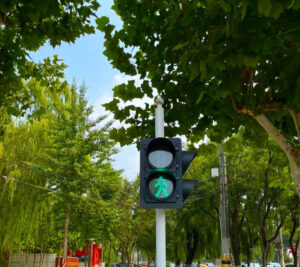目录
ToggleStop lights, also known as traffic signals, are crucial components of modern transportation networks, playing a key role in traffic management and safety. They regulate the flow of traffic, ensuring the safety of drivers, pedestrians, and cyclists alike. From busy city intersections to quiet suburban streets, stop lights play a crucial role in maintaining order, reducing accidents, and enhancing traffic efficiency. This article delves into the role of stop lights, their functions, evolution, and their impact on traffic safety and urban mobility.
The Importance of Stop Lights in Traffic Control
Stop lights are crucial for regulating the movement of vehicles and pedestrians at intersections, crosswalks, and busy roads. Without these signals, traffic would become disorganized, significantly raising the risk of accidents.
- Regulating Traffic Flow
The primary function of a stop light is to manage traffic at intersections, ensuring that vehicles and pedestrians move in an organized manner. By controlling when vehicles stop (red light) and go (green light), stop lights help prevent collisions and reduce congestion. - Improving Road Safety
Stop lights are crucial in promoting road safety. They provide clear, time-based instructions for vehicles and pedestrians, helping prevent accidents, especially at busy crossings. They also reduce the likelihood of dangerous behavior, such as speeding through intersections or jaywalking. - Preventing Traffic Congestion
In busy urban environments, stop lights are key to minimizing traffic jams. By allocating time for different lanes of traffic and pedestrian crossings, stop lights help ensure that all road users get their turn, preventing gridlock and improving overall traffic efficiency.
How Stop Lights Work: The Color Code System
Stop lights operate using a color code system—red, yellow, and green—to convey clear instructions. This system has been in place for over a century and remains the foundation of traffic signal design.
- Red: When the light turns red, vehicles are required to stop. This indicates that the intersection is not safe for crossing, and vehicles must wait until the light turns green.
- Green: A green light indicates that it is safe to proceed, allowing vehicles and pedestrians to move through the intersection in an orderly and controlled manner.
- Yellow: A yellow light acts as a cautionary signal, advising drivers to slow down and prepare to stop as the light nears red. This brief transition time helps ensure safe and smooth changes between green and red signals.
In some cases, additional signals are used to direct traffic in specific directions to maintain smooth traffic flow.
Different Types of Stop Lights
Stop lights are not a one-size-fits-all solution. Depending on the location and the traffic conditions, various types of stop lights are used to meet specific needs.

- Standard Intersection Stop Lights
These are the most common type of stop lights, found at urban intersections and major roadways. Typically mounted on poles or traffic light stands, these signals manage traffic in multiple directions—forward, left, and right. - Pedestrian Stop Lights
Pedestrian stop lights are designed to ensure the safe crossing of roads by walkers. These signals often feature a “Walk” or “Don’t Walk” message, along with a countdown timer that shows how many seconds are left before the light changes. - Smart Stop Lights
Smart stop lights are equipped with sensors, cameras, or other data-gathering technologies that allow the system to adjust traffic signal timing based on real-time traffic conditions. These systems optimize traffic flow, reduce congestion, and minimize fuel consumption, making urban roads more efficient and eco-friendly.
Advancements in Stop Light Technology
As cities become smarter, stop lights are evolving beyond their traditional roles. Modern technology and data analytics enhance their capabilities and improve traffic management.
- Adaptive Traffic Signals
These systems adjust light cycles based on real-time traffic conditions, using sensors or cameras to reduce congestion and improve traffic flow, especially during peak hours. - Connected Traffic Signals
Connected stop lights interact with each other and nearby vehicles through IoT technology. This seamless communication helps optimize traffic flow, reducing congestion and improving efficiency across intersections and urban networks. - Solar-Powered Stop Lights
Solar-powered signals use energy from the sun, lowering electricity costs and providing an eco-friendly alternative to traditional grid-powered lights, particularly in sunny areas. - Pedestrian Detection Technology
Sensors detect waiting pedestrians, keeping green lights on longer when needed. This improves pedestrian safety at busy crosswalks without disrupting traffic flow.
Conclusion
Stop lights play a vital role in keeping roads safe and organized. By managing traffic flow, preventing accidents, and guiding pedestrians, they ensure smoother and more efficient transportation. Modern innovations, such as smart adaptive signals, pedestrian detection, and solar-powered systems, not only improve traffic efficiency but also support sustainability. As cities continue to grow and traffic demands increase, stop lights will remain essential for creating safer, more efficient, and environmentally friendly streets for everyone.
0